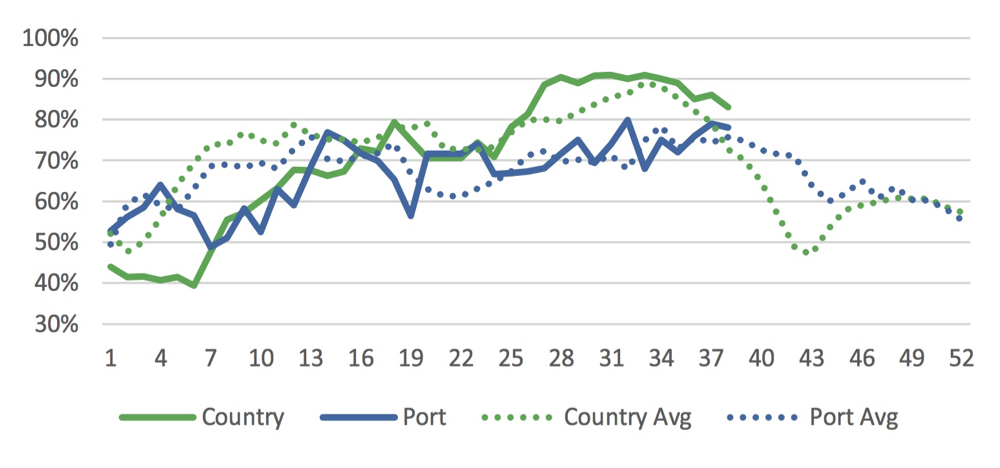One of the first red flags (see graph) for grain movement came in January when grain stocks at country elevators started to build faster than stocks in export terminals as grain shipping slowed, Mark Hemmes, Canada’s grain monitor, said in an interview May 6.
By around week 27 (Feb. 2-8) country elevators, on average, were close to 90 per cent full versus 70 per cent at the terminals.
“When it’s at 90 per cent that means there’s a good number of elevators in the country that are totally full,” Hemmes said.
Read Also

Finally getting paid for sustainable farming?
Alberta project says they might have a line on a workable ecosystem credit model to reward farmers for sustainability, and Manitoba might be next
Farmers can’t deliver grain when elevators are plugged and can’t get paid either, he added.
“The vessel lineups (at Vancouver) were just obscene at one point,” Hemmes said. “I think in week 28 we were at 55 vessels for almost the whole week and then it started to come back down.”
In some rail corridors car cycle times hit 20 days earlier this year, which hadn’t been seen since 1999, he said.
In more recent years they were 14 to 15 days, but had been climbing to 16 or 17 days, Hemmes said. The railways’ purchase of additional cars offset the slower cycle times, he said.
“When you’ve got 20-plus days, their capacity has come right down,” Hemmes said. “But what we’ve seen in the last month and a half is that those car cycles have come way back down and they are back into the 15- and 16-day range. When you have a car cycle moving that quickly the (rail) capacity increases.”
















